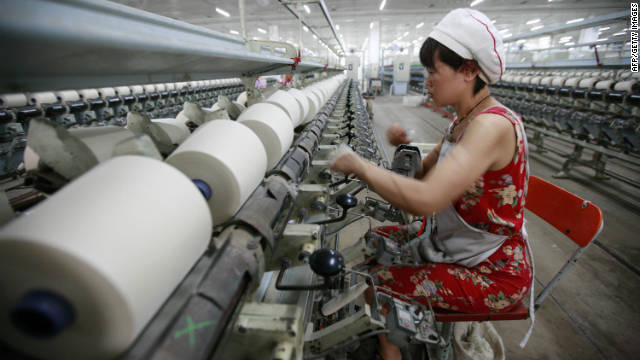

Now look at the second picture from a Daily Beast article about the failure of Evergreen Solar, a builder of solar panels heavily subsidized by the state of Massachusetts, which shipped its manufacturing from the Bay State and Michigan to China – and then went bankrupt with the loss of 1000 US jobs. Notice that the man in this picture from the Massachusetts plant appears to be putting solar panels together by hand. Even though there was indubitably some automation in this factory, the picture illustrates low productivity and a high labor cost per unit produced. Of course Massachusetts subsidized this factory because of the number of jobs it would create; so, in the search for subsidies, high productivity and low job count is a negative. Trouble is that, in the real world, low productivity and high job count leads to business failure. Exactly what happened here.
Private investors demand high productivity; democratic governments, as investors, looks for low productivity and high job counts. When I was Vermont's Stimulus Czar, we used to joke that we could make Washington happier with our job numbers if we banned the use of power tools on construction projects. We didn't laugh at our own joke.
The political problem with government investments is that some of them – like Solyndra and Evergreen – fail. The real problem with "job creation" investments by government is that they encourage inefficient enterprises and discourage private investors from putting their money into more efficient competitors, since the private investors don't want to compete with "free" government money.
New Chinese factories are highly automated and efficient even though they are often subsidized by government money or are simply government owned. The Chinese seem to realize that they need to efficient in order to compete. IMHO, however, the Chinese government investments are also riding for a fall; the Chinese bet, for example, that the West would continue to subsidize the purchase of solar panels. Meanwhile strapped governments in the Europe and the US are cutting back on and ending subsidies; not even cheap Chinese solar panels are a good business proposition without subsidies. Political favoritism plays an even greater role in the allocation of government subsidies in China than it does here in the US.
We now have a great opportunity to bring manufacturing jobs back to the US. The fact that labor costs are lower in China is less and less important as productivity rises everywhere. We have lower energy costs than China; we have the similar supplies of rare earths; it is obviously cheaper to transport goods to the giant US market from here rather than from China; and the Chinese have disappointed many of their American customers with poor quality (and dangerous additives). Some jobs are coming back already.
What we DON'T need is more government investment or even tax breaks for those who create "the most jobs". Lean factories will survive – and create high-paying jobs for American workers. Over-staffed enterprises will fail and create no jobs except for bankruptcy lawyers. American companies are sitting on piles of cash. Increasing sales – like those on Black Friday – will encourage them to build capacity, lean capacity. The big companies are sitting on so much cash, on which they earn almost no interest, that they don't even need the struggling banks to finance their expansion. And they certainly don't need the government to dispense even more subsidies to the inefficient.
The greatest stimulus government can deliver would be cutting the red tape needed to build and to tap into our own energy supplies. The second biggest stimulus would be an announcement that government is no longer going to try to pick industrial winners and losers – and recognizes that rewarding excess "job creation" is a surefire way to destroy private sector jobs.
Related posts: